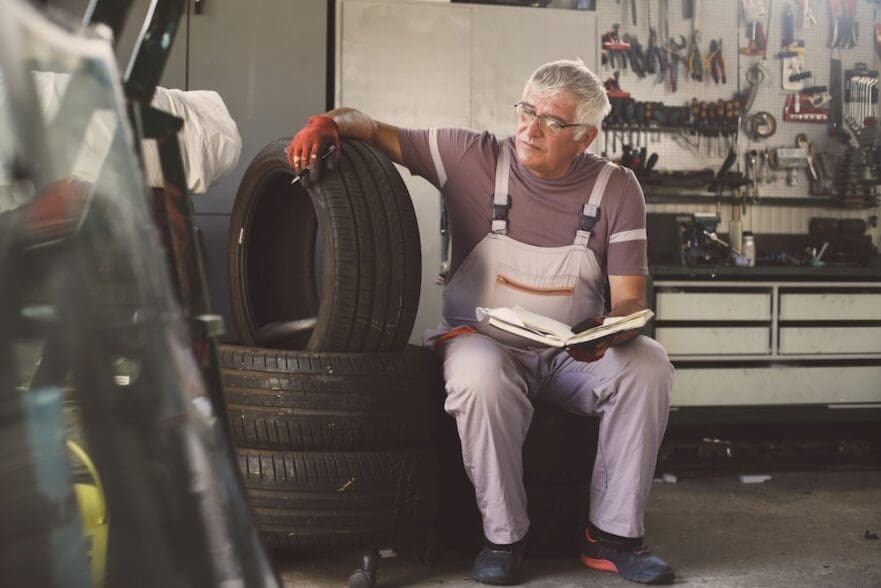In the new book There Is No Place for Us: Working and Homeless in America, journalist Brian Goldstone examined the mean reality that people are working hard to pay the rent, but still end up homeless. It’s not surprising. A prominent UC San Francisco study on homelessness found that the overriding reason people in California end up on the streets is unfair, sky-high rents. Once again, it shows the need for rent regulations and the construction of more affordable housing in the United States.
Rachel Cohen, a policy correspondent for Vox, talked with Goldstone for a recent interview about his book. “His reporting challenges the longstanding American narrative,” she wrote, “connecting homelessness with unemployment or an unwillingness to work.”
Goldstone looked into people living in extended-stay motels, sleeping in cars, or couch-surfing, which are all forms of housing instability. It’s not a new development. There have been numerous news stories, over the years, of seniors and college students living in their cars, for example, because they couldn’t afford excessive rents.
As far back as 2016, NPR looked into seniors sleeping in their cars in California and the creation of a Safe Parking program at a church. In 2021, the Los Angeles Times examined increasing numbers of college students living in their cars. It continues to be a problem.
Goldstone made the point that people living in tents under a bridge or on a sidewalk is merely a first sign that the country is facing a serious humanitarian crisis.
“By and large,” he said, “these tents on the streets are like the tip of the iceberg, and that’s the most extreme edge of homelessness in America. A lot of the people I’m writing about in the book are like what’s under the water surface. But it’s important to say that this is all one giant iceberg. The most extreme and acute this emergency gets, the more visible it becomes, because it simply pushes up to the surface. But until we address what’s under that surface or out of view, that visibility will continue. There just won’t be enough places for it to hide, so to speak.”
Asked how to meaningfully address homelessness, Goldstone said, “I hesitate to enter directly into debates over market-rate housing and zoning reform and tenant rights and rent control. My own view is that we need everything like that, and nothing on its own is going to be sufficient. The only thing that might truly be sufficient is a massive investment at every level of government in social housing.”
It’s similar to what Housing Is A Human Right has long been advocating with our “3 Ps” model to address the housing affordability and homelessness crises: protect tenants through rent control and other tenant protections; preserve existing affordable housing, not demolish it for luxury housing; and produce new affordable and homeless housing through the adaptive reuse of existing buildings and other cost-effective methods to construct housing, such as prefab homes.
Corporate landlords and YIMBYs, however, push only one solution, and it’s ineffective: trickle-down housing, which focuses on building as much luxury housing as possible, which doesn’t help the poor and middle and working class, who can’t afford expensive housing and are getting hit hardest by the housing affordability and homelessness crises.
For years, Housing Is A Human Right has been pushing for a multi-pronged strategy to address sky-high rents and homelessness.
Asked about his findings on “working homeless,” Goldstone offered this important insight: “Many people in this country, especially those who are not experiencing this precarity themselves, have needed to believe a story about poverty and homelessness that says if people just work harder, if they just get a job, they will be okay. Yet in some cases, certain jobs can actually make it even more likely that homelessness will be waiting for you and I think that’s really, really hard for us to come to terms with.
“What was so shocking to me is just seeing people work and work and work and work some more and work some more after that and it’s never enough. It’s never enough to secure their most basic material needs, housing being the most essential, arguably, among them. That reality is not new, that didn’t just happen in the last few years, but the scale is new.”
He added, “People across the political spectrum almost need to believe certain things about homelessness because acknowledging the reality calls into question too many of the fundamental assumptions that we in the United States hold dear, like the necessity for hard work. And I’m saying that hard work is not enough in this country.”
At the same time, as people work and struggle to pay the rent to keep a roof over their heads, billionaire corporate landlords have only gotten richer by charging outrageous rents to pay for their luxurious lifestyles of superyachts and mansions all over the world. The multi-millionaires and billionaires, with the help of lobbying organizations such as the California Apartment Association, also tell lies about rent regulations to confuse and misinform the public so they can keep charging wildly inflated rents.
The only way change is going to come is if people, especially the poor and middle and working class, do not fall for those lies – and demand rent protections and the production of more affordable and homeless housing.
Follow Housing Is A Human Right on Facebook, X, Instagram, and Bluesky.

